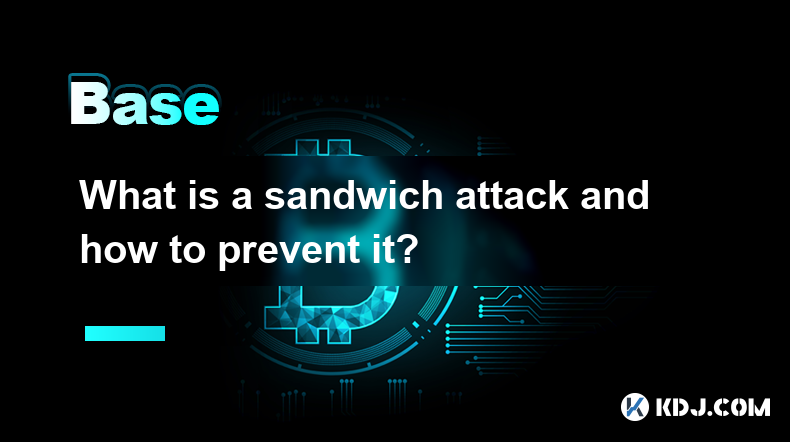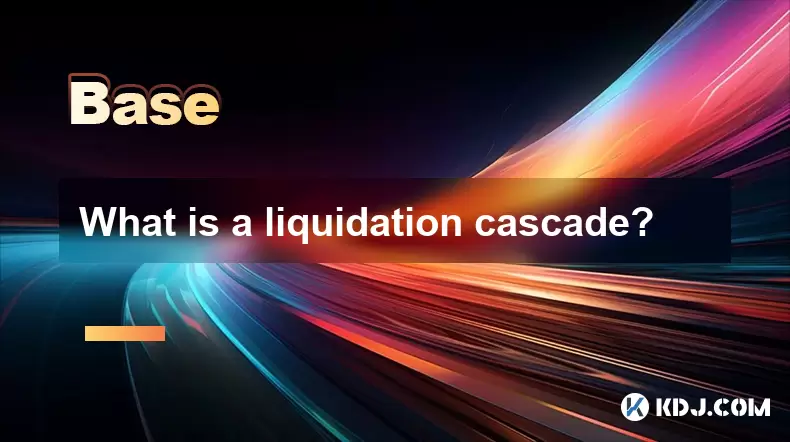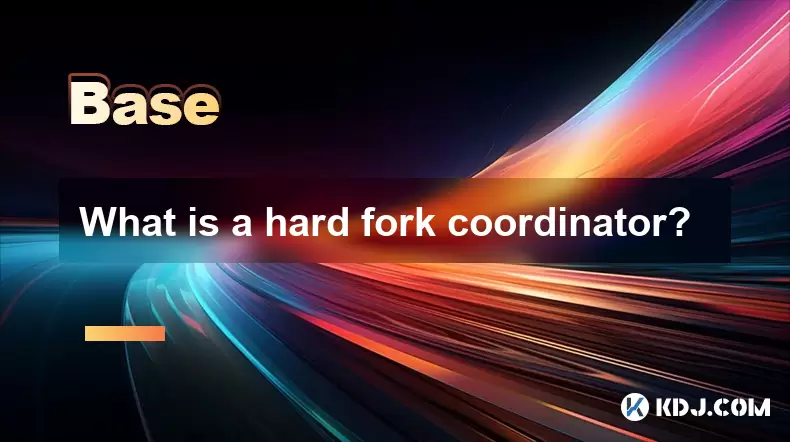-
 Bitcoin
Bitcoin $109,459.7682
2.44% -
 Ethereum
Ethereum $2,598.6052
6.29% -
 Tether USDt
Tether USDt $1.0003
0.00% -
 XRP
XRP $2.2734
3.95% -
 BNB
BNB $661.4886
1.58% -
 Solana
Solana $155.4825
4.35% -
 USDC
USDC $0.9999
-0.02% -
 TRON
TRON $0.2838
1.04% -
 Dogecoin
Dogecoin $0.1740
8.25% -
 Cardano
Cardano $0.6047
9.04% -
 Hyperliquid
Hyperliquid $40.2302
6.50% -
 Sui
Sui $2.9863
10.05% -
 Bitcoin Cash
Bitcoin Cash $509.5786
0.60% -
 Chainlink
Chainlink $13.8156
6.03% -
 UNUS SED LEO
UNUS SED LEO $9.0142
0.69% -
 Avalanche
Avalanche $19.0337
8.68% -
 Stellar
Stellar $0.2438
5.17% -
 Toncoin
Toncoin $2.9012
3.59% -
 Shiba Inu
Shiba Inu $0.0...01210
6.20% -
 Litecoin
Litecoin $90.0882
7.05% -
 Hedera
Hedera $0.1597
8.53% -
 Monero
Monero $326.3340
2.88% -
 Polkadot
Polkadot $3.6365
9.32% -
 Bitget Token
Bitget Token $4.6162
2.72% -
 Dai
Dai $1.0001
0.00% -
 Ethena USDe
Ethena USDe $1.0002
-0.01% -
 Uniswap
Uniswap $7.6403
10.47% -
 Pepe
Pepe $0.0...01060
12.03% -
 Aave
Aave $281.3664
7.56% -
 Pi
Pi $0.4992
1.76%
What is a sandwich attack and how to prevent it?
Sandwich attacks exploit price slippage on DEXs by placing manipulative transactions around a victim's trade, but can be mitigated with slippage protection and transaction batching.
Apr 08, 2025 at 01:00 am

A sandwich attack is a type of malicious strategy used in decentralized finance (DeFi) to exploit the price slippage that occurs during large transactions on decentralized exchanges (DEXs). In this article, we will delve into the mechanics of a sandwich attack, explore real-world examples, and provide detailed strategies on how to prevent such attacks.
Understanding the Mechanics of a Sandwich Attack
A sandwich attack involves a malicious actor placing two transactions around a victim's transaction to manipulate the price of a token. Here's how it works:
Front-Running Transaction: The attacker first places a buy order for the token just before the victim's transaction is executed. This increases the token's price due to the increased demand.
Victim's Transaction: The victim's transaction, which is usually a large order, is then executed at the new, higher price. This results in the victim paying more for the tokens than they initially anticipated.
Back-Running Transaction: Immediately after the victim's transaction, the attacker sells the tokens they bought in the front-running transaction at the inflated price, profiting from the price difference.
The key to a successful sandwich attack is the ability to predict and manipulate the order of transactions on the blockchain, which is often facilitated by miner extractable value (MEV) bots.
Real-World Examples of Sandwich Attacks
To better understand sandwich attacks, let's look at a few real-world examples:
Uniswap Sandwich Attack: In one notable case, a trader attempted to swap a large amount of ETH for DAI on Uniswap. An attacker detected this large transaction and executed a sandwich attack, resulting in the victim paying a significantly higher price for DAI than expected. The attacker profited from the price manipulation.
SushiSwap Incident: Another example occurred on SushiSwap, where a user's large transaction was sandwiched, leading to a substantial loss for the victim and a profit for the attacker. These incidents highlight the vulnerability of large transactions on DEXs to sandwich attacks.
How to Detect a Sandwich Attack
Detecting a sandwich attack can be challenging, but there are several signs to look out for:
Unusual Price Movements: If you notice a sudden spike in the price of a token just before your transaction and a subsequent drop after, it could be a sign of a sandwich attack.
High Slippage: If your transaction experiences unusually high slippage, it may indicate that a sandwich attack is occurring.
Transaction Order: By analyzing the order of transactions on the blockchain, you can identify if your transaction was sandwiched between two others that manipulated the price.
Strategies to Prevent Sandwich Attacks
Preventing sandwich attacks requires a combination of awareness, strategic planning, and the use of protective tools. Here are some effective strategies:
Use of Slippage Protection
One of the most straightforward ways to protect against sandwich attacks is to set a slippage tolerance on your transactions. Slippage tolerance is the maximum percentage difference you are willing to accept between the expected price and the executed price of a transaction.
Set a Reasonable Slippage Tolerance: For example, if you set a slippage tolerance of 1%, your transaction will only execute if the price does not deviate more than 1% from the expected price. This can help prevent your transaction from being executed at an inflated price due to a sandwich attack.
Adjust Slippage Based on Market Conditions: In highly volatile markets, you may need to adjust your slippage tolerance to account for natural price fluctuations while still protecting against sandwich attacks.
Utilize Transaction Batching
Transaction batching involves grouping multiple transactions into a single transaction. This can make it more difficult for attackers to predict and manipulate individual transactions.
Batch Your Transactions: Instead of executing a single large transaction, break it down into smaller transactions and batch them together. This reduces the visibility of your large transaction and makes it harder for attackers to target.
Use Smart Contracts for Batching: Some DeFi platforms offer smart contracts that can automatically batch transactions for you, providing an additional layer of protection.
Leverage MEV Protection Tools
Several tools have been developed to protect against MEV-related attacks, including sandwich attacks. These tools work by either hiding your transaction from MEV bots or by strategically placing your transaction to minimize the risk of manipulation.
Use MEV Protection Services: Services like Flashbots and Eden Network can help protect your transactions from MEV bots. These services work by routing your transactions through a network that is less susceptible to MEV attacks.
Implement Transaction Privacy: Some platforms offer transaction privacy features that can hide your transaction details from public view, making it harder for attackers to target your transactions.
Monitor and Analyze Blockchain Data
Regularly monitoring and analyzing blockchain data can help you stay ahead of potential sandwich attacks. By keeping an eye on transaction patterns and price movements, you can identify and react to suspicious activities.
Use Blockchain Analytics Tools: Tools like Etherscan and Dune Analytics can help you track and analyze transactions on the blockchain. By monitoring these tools, you can detect unusual patterns that may indicate a sandwich attack.
Set Up Alerts: Configure alerts for specific tokens or transaction sizes to be notified of potential sandwich attacks in real-time. This allows you to take immediate action to protect your transactions.
Frequently Asked Questions
Q: Can sandwich attacks be completely eliminated?
A: While it is challenging to completely eliminate sandwich attacks, the strategies outlined above can significantly reduce the risk. Continuous advancements in blockchain technology and DeFi platforms are also working towards minimizing these vulnerabilities.
Q: Are sandwich attacks only a concern for large transactions?
A: Sandwich attacks are more commonly associated with large transactions due to the potential for higher profits. However, smaller transactions can also be targeted, especially if they involve tokens with low liquidity.
Q: How do sandwich attacks affect the overall DeFi ecosystem?
A: Sandwich attacks can erode trust in DeFi platforms and discourage users from participating in decentralized exchanges. They highlight the need for robust security measures and ongoing efforts to protect users from malicious actors.
Q: What role do miners play in sandwich attacks?
A: Miners can play a significant role in sandwich attacks by prioritizing transactions that offer higher fees, which are often associated with MEV bots. This allows attackers to manipulate the order of transactions on the blockchain, facilitating sandwich attacks.
Disclaimer:info@kdj.com
The information provided is not trading advice. kdj.com does not assume any responsibility for any investments made based on the information provided in this article. Cryptocurrencies are highly volatile and it is highly recommended that you invest with caution after thorough research!
If you believe that the content used on this website infringes your copyright, please contact us immediately (info@kdj.com) and we will delete it promptly.
- Altcoin Alert: Binance Listings and the Wild West of Crypto
- 2025-07-03 14:30:11
- Decentralized Stablecoins in 2025: Challenging Centralized Counterparts?
- 2025-07-03 14:30:11
- Meme Coin Mania: Is BTC Bull the Next Big Thing in a Limited Time BTC Bull Run?
- 2025-07-03 12:30:11
- Bitcoin Soars to $109,000: What's Fueling the Crypto Rally?
- 2025-07-03 10:30:13
- Hong Kong: Racing to Be the World's Tokenization Hub
- 2025-07-03 14:50:11
- Splatterhouse Rocks Retro Scene: A UK Magazine Deep Dive
- 2025-07-03 12:30:11
Related knowledge

What is open interest in derivatives?
Jul 03,2025 at 02:49pm
Understanding Open Interest in DerivativesOpen interest is a critical metric used in the cryptocurrency derivatives market, particularly when analyzing futures and options contracts. It represents the total number of outstanding contracts that have not been settled or closed by either party involved. Unlike trading volume, which counts all trades made i...

What is a liquidation cascade?
Jul 03,2025 at 07:15am
Understanding the Concept of LiquidationIn the realm of cryptocurrency trading, liquidation refers to the process by which a trader's position is automatically closed due to insufficient funds to maintain the leveraged trade. This typically occurs when the market moves against the trader's position and their account equity falls below the required maint...

What is a hard fork coordinator?
Jul 03,2025 at 12:42pm
Understanding the Role of a Hard Fork CoordinatorIn the world of blockchain and cryptocurrencies, a hard fork coordinator plays a critical role during major network upgrades. A hard fork is a significant change to a blockchain’s protocol that makes previously invalid blocks or transactions valid (or vice versa). This type of upgrade requires all nodes o...

What is a Byzantine Fault Tolerance (BFT)?
Jul 03,2025 at 11:49am
Understanding the Concept of Byzantine Fault ToleranceByzantine Fault Tolerance (BFT) is a critical concept in distributed systems, particularly within the realm of blockchain technology and cryptocurrencies. It refers to the ability of a system to continue functioning correctly even when some components fail or behave maliciously. The term originates f...

What is a subDAO?
Jul 03,2025 at 09:36am
Understanding the Concept of SubDAOA SubDAO, short for Sub-Decentralized Autonomous Organization, is a specialized entity that operates under the umbrella of a larger DAO (Decentralized Autonomous Organization). It functions with its own set of rules, governance mechanisms, and tokenomics while remaining aligned with the overarching goals of the parent ...

What is the Travel Rule in crypto?
Jul 03,2025 at 10:28am
Understanding the Travel Rule in CryptocurrencyThe Travel Rule is a regulatory requirement initially introduced by the Financial Action Task Force (FATF) for traditional financial institutions. It has since been extended to cryptocurrency transactions, especially those involving Virtual Asset Service Providers (VASPs). The core purpose of this rule is t...

What is open interest in derivatives?
Jul 03,2025 at 02:49pm
Understanding Open Interest in DerivativesOpen interest is a critical metric used in the cryptocurrency derivatives market, particularly when analyzing futures and options contracts. It represents the total number of outstanding contracts that have not been settled or closed by either party involved. Unlike trading volume, which counts all trades made i...

What is a liquidation cascade?
Jul 03,2025 at 07:15am
Understanding the Concept of LiquidationIn the realm of cryptocurrency trading, liquidation refers to the process by which a trader's position is automatically closed due to insufficient funds to maintain the leveraged trade. This typically occurs when the market moves against the trader's position and their account equity falls below the required maint...

What is a hard fork coordinator?
Jul 03,2025 at 12:42pm
Understanding the Role of a Hard Fork CoordinatorIn the world of blockchain and cryptocurrencies, a hard fork coordinator plays a critical role during major network upgrades. A hard fork is a significant change to a blockchain’s protocol that makes previously invalid blocks or transactions valid (or vice versa). This type of upgrade requires all nodes o...

What is a Byzantine Fault Tolerance (BFT)?
Jul 03,2025 at 11:49am
Understanding the Concept of Byzantine Fault ToleranceByzantine Fault Tolerance (BFT) is a critical concept in distributed systems, particularly within the realm of blockchain technology and cryptocurrencies. It refers to the ability of a system to continue functioning correctly even when some components fail or behave maliciously. The term originates f...

What is a subDAO?
Jul 03,2025 at 09:36am
Understanding the Concept of SubDAOA SubDAO, short for Sub-Decentralized Autonomous Organization, is a specialized entity that operates under the umbrella of a larger DAO (Decentralized Autonomous Organization). It functions with its own set of rules, governance mechanisms, and tokenomics while remaining aligned with the overarching goals of the parent ...

What is the Travel Rule in crypto?
Jul 03,2025 at 10:28am
Understanding the Travel Rule in CryptocurrencyThe Travel Rule is a regulatory requirement initially introduced by the Financial Action Task Force (FATF) for traditional financial institutions. It has since been extended to cryptocurrency transactions, especially those involving Virtual Asset Service Providers (VASPs). The core purpose of this rule is t...
See all articles

























































































